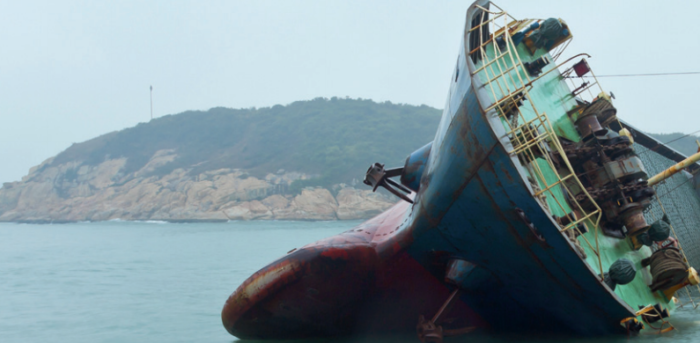The Swedish P&I Club has issued its Monthly Safety Scenario for October, regarding an incident in which a vessel blacked out and was drifting in the severe weather conditions.
The incident
The vessel was in ballast and sailing about 7 miles from land on its way to the loading port in the NW Atlantic. It was early spring and there were strong winds and large waves. There was also some ice in the water so the crew had to clear the lower starboard sea-chest which was blocked with ice. The crew changed to the upper intake and then removed the large cover from the lower sea suction filter, finding it choked up with ice slush. While removing the ice, the main seawater valve, located on the side shell plate, began to leak.
The crew tried replacing the filter cover and one of the engineers applied a large valve wheel key to the valve, in an attempt to stop the leakage. Unfortunately, too much force was applied and the gear mechanism that operates the valve spindle to open and close the valve, located in the valve cover, was damaged and water began leaking into the engine room at a high pressure.
The crew attempted to stop the leak but the pressure and volume of water was too great. Attempts to pump out the water entering the engine room were also unsuccessful as the electric motors and control gear were covered with seawater causing short circuits and disabling the pumps. The vessel blacked out and was drifting in the severe weather conditions. The vessel began to drift approximately 6-7 miles off the coast. The coastguard arrived at the scene and tried to attach a tow line, however both attempts failed. The vessel dropped both anchors after the coastguard’s failed attempts. Dropping the anchors did not stop the vessel drifting. It eventually grounded and the crew was evacuated approximately 30 minutes later.
Consequences
A day later a salvage team boarded the vessel by helicopter and were assisted by two tugs. Wires were connected from the grounded vessel to the tugs. The weather had improved and the vessel was refloated and towed to the nearest port. An underwater inspection revealed extensive damage to the vessel’s shell plating.
Operations continued over the following days cleaning the engine room with high pressure washing and removing the pollutant from the vessel. The vessel had to dry dock to do all the repairs.
Issues to be concidered
- When doing an important job like cleaning the sea suction, it is important that there are clear procedures on how the job should be done and, as in any critical operation, it is best to have two people check to ensure that mistakes are detected.
- A job like this should have a work permit and risk assessment which highlight potential risks.
- It is also important to do drills on how to deal with a salvage operation, so the crew is better prepared.
Source & Image credit: Swedish P&I Club






























































